
Let’s say that we are a diverse group of mature blokes brought together through our passion for motorcycling – the further afield the better. Age is no barrier, the older the grumpier, and we are driven by the fact that we have limited time on this planet and a big world to see. Restrictions of course come into play and our aims, pure and simple as they are, need to fit within the constraints of family commitments. We are grateful to our spouses for their patience and understanding, particularly when returning with hardened arses, stories of heroism and a sackful of dirty underwear.
Each member of the group takes on the challenge of arranging a tour in turn and on this occasion the task fell to Ian Kirkwood. It happened after a momentary silence as we stared into our almost empty pint glasses and he was said to mutter the word: “Peru.” Equally it may have been an involuntary exhalation of air from the nether regions, we shall never know but the die was cast and it was to Peru that we shall go.
On this tour the group comprised Richard; natural leader brimming with ideas and annoyingly – most of them bloody good. Richard finds irony, double entendres and peculiar juxtapositions in situations which can sometimes take awhile to fathom out as he explains his observation through fits of laughter. As we will later see, he also has a great boyish sense of humour which can when needed lighten the mood of the group.

Nick Jackson is a part-time drummer which was a talent we discovered while sitting in a hotel in Santa Teresa. Two young boys wandered in with a drum and Nick immediately jumped up and offered to demonstrate his skills. Clearly he was a little rusty and while the boys were initially thrilled that a Liverpool supporter with all its pedigreed connotations was going to blow them away, sadly his rhythm deserted him. Having held their composure, they finally collapsed in giggles as did we while Nick, face contorted in concentration, battled for that elusive beat. Nick is a wordsmith extraordinaire and creams the Telegraph crossword between mouthfuls of corn flakes. He also sent me several levels up on my Wordscape game which has proved impossible to maintain.

Ian Kirkwood on the other hand is the thoughtful one in the group. He is a geek on all things ‘Battle of Britain’ and is said to have a rare talent, this being an ability to emulate the exact engine note of a Merlin engine at full throttle using only his buttocks. He always has a natural instinct for the best camera viewpoint. This means that whenever we stopped for a picture, we would wait to see where Ian was standing before dutifully taking our turn to stand in the same place and take the exact same shot.

As for me I am the observer and scribe, just happy to have been invited to join, especially as this is an off-road venture and being more of an asphalt bloke, will be a first for me.

Hello South America!
Our goal for this trip was to hire motorcycles in Cusco, centre of the Inca Empire and spend 5 days traversing the high trails of the Andes to reach Machu Picchu. This would take us thousands of metres into the remotest villages using roads that only 4×4 vehicles are able to negotiate and see rural life as it has been lived for centuries.
Ian the organiser chose Motorcycle Tours Peru based in Cusco run by Victor Ascarsa who grew up in the Sacred Valley and as a young boy learned the intricacies of these trails. Victor’s organisation was impeccable with excellent support throughout the tour. He provided both a ride leader and official photographer to record every hair-raising moment and followed in his Toyota hi-lux 4×4. Our hire motorcycles are two Honda 250cc machines, a Honda 300cc and a BMW GS 310.


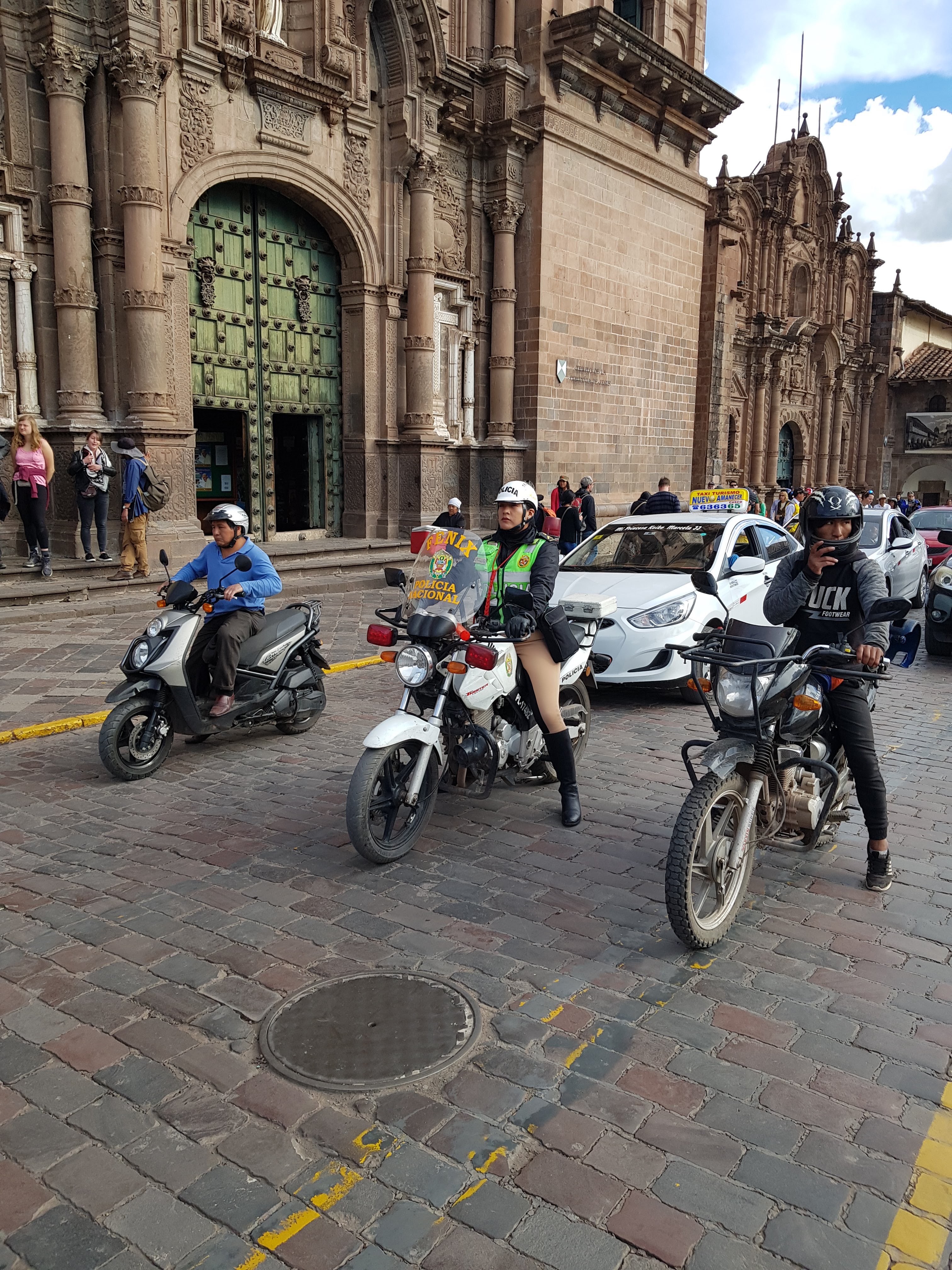
Urubamba River and the Sacred Valley
Our first venture on the bikes was an afternoon warm up session to see the Urubamba River and Sacred Valley. The Sacred Valley along with Cusco and the ancient city of Machu Picchu formed the heart of the Inca Empire. Stretching roughly 60 kilometres, it’s an area of fertile farmland and Spanish colonial villages. It was a major feature in the religious cosmology of the Incas. They believed that the flow of the Urubamba, was closely linked to the constellations and mountains and that it was the counterpart to the Milky Way on earth.
The driving here is very aggressive, no inch of tarmac is sacrificed to anyone whether another vehicle, pedestrian or animal and there is little or no indication of what drivers might do e.g. the car ahead deciding to turn as you’re preparing to overtake. Interestingly we discover that if we hold our nerve the driver will give ground – its a test. We adjust our style to be purposeful and clear with one hand hovering on the brakes.


After spending some time looking at the original gateway into Cusco designed to ensure that only people with the right credentials were allowed in, we returned to Cusco for a debrief and preparation for the tour proper to commence the following day.
Victor suggested that we maintain a clear head and have an early night in to ensure we were well rested for the start of the tour. That evening we retired early as suggested to the Republica Del Pisco cocktail bar situated in the heart of Cusco’s pulsating city centre for several rounds of beers followed by a dinner of Alpaca steak and full-bodied red. We were looking forward to the first day of our ride into the Andes and in my case with a sore head and dodgy stomach.

Cusco to Pisac

Winding our way out of Cusco from the historical centre we headed deep into the Sacred Valley towards Moray. We struggled with the hire bikes due to the high altitude and found ourselves coaxing every ounce of torque to get any level of performance. Particularly troubling were the switchbacks when climbing which being on loose gravel required care and dexterity. Most of the time we were standing on the pegs, but first gear is often required on the turn and reaching it quickly with focus on clutch control and the steering on full lock while avoiding a stall was for me, being new to this, quite a challenge.

Moray
Everywhere you look in Cusco you can see how advanced the Incas were in their agricultural techniques, such as the terracing system and irrigation using aqueducts. In Moray, for example, they used circular terraces that demonstrate their level of understanding of agriculture. They are built using retaining walls connected by an irrigation system. Moray was a crop lab and they used the terraces to create micro-climates to grow various corn that were adapted to higher lands.

Ollantaytambo – “The Living Inca City”
After leaving Moray we continued through the Urubambu Valley to Ollantaytambo known as “the living Inca city.” This large 15th century Inca fortress is one of Peru’s best preserved ruins. The Inca emperor Pachacuti, built agricultural terraces, an irrigation system, a ceremonial centre and noble houses. Spanish conquistadors invaded and conquered the Inca Empire and Peru and colonised the region for over 250 years. The Incas lost 90% of their population, mostly from diseases caught from the foreigners, during the Spanish colonisation.


Feeling hot and tired from the exertion of climbing to the top of the Ollantaytambo ruins we rode a short distance to the Tunupa Restaurant for lunch and relaxed in the outdoor garden eating area. After lunch we continued the journey to Pisac town and were booked in to the Royal Inka Hotel where we stayed the night.
Lares Hot Springs
Leaving Pisac, we took a road though the Sacred Valley towards Quella Quella and Calca Town and then high into the Peruvian Andes to 4,450m. Our destination today is the Lares Hot-Springs. We are using dirt roads or tracks which wind through the valleys and are difficult for cars to navigate. Hence, at these altitudes we are completely alone with the mountains and the silence. These are the lands of the Quechua in their wonderful brightly coloured traditional clothes working in the fields or tending their Alpaca herds. It is a privilege to witness a way of life that has not changed since the time of the Incas.

We came across a small group of Quechua herders and stopped to take a break. After a while one of them overcome with curiosity came over to investigate these strangers. She chirruped some words in Quechua which Victor our guide translated: “as please help yourself to some potatoes” which she held in her outstretched dress. They had been par-boiled and were quite tasty. I asked Victor to check whether we could take her picture, but she shyly declined so I only have a furtive sideways view. We continued our way through Vilcabama and had lunch at Carmen del Valle Restaurant in Calca.
“The Quechua are often described as the direct descendants of the Incas although they predated the Incas. Historical demographers estimate that in 1491 (before Columbus sailed), 6.5 million indigenous people inhabited the South American continent. By the end of the 1600s, the death toll was at 80%. Millions perished, if not from warfare and conflict, then from disease and poor living conditions. It would take four centuries for the total population of Latin America to match its pre-Conquest numbers.
Leaving Calca we climbed high into the Andes reaching Abra de Lares at 4,461m and saw no evidence of civilisation so it was a surprise to come across people going about their daily business.

At one point we rounded a corner to find a young Quechua girl probably no more than 10 collecting grasses alongside the track. She had a traditional wrap around her waist into which she was tying and placing the grasses carefully. Apparently, these were for her guinea pigs – quite a delicacy in these parts.

From there we descended into the rain forest noticing as the sparse vegetation of the higher regions gave way to the dense thick forest. Now we were in a tropical wonderland riding through rushing rivers of clear, refreshing sparkling water formed by waterfalls pouring off the mountain from the melting glacier and snow while feeling the heat and humidity enveloping us.
An image that remains fixed in my mind was when rounding a corner, we came across a young tall elegant woman with long silky black hair wearing a brown suede Stetson hat riding a horse. She was meandering quite slowly along the path some distance from a small village and seemed quite unperturbed by our presence with her regal poise. In these parts where all human endeavour seemed to be focused on self-sustainability, her relaxed manner and clear enjoyment of the moment seemed somehow out of place.
It was at this point that I had a strange sensation that my motorcycle was sliding around on the loose gravelly surface a little more than normal. Sure enough, I had a flat rear tyre. On reflection, given that we were often riding on the edge of the precipice, it was just as well that I noticed it.
Immediately Eduardo our ride leader set to work, whipping off the back wheel, removing the tyre and in no time at all had replaced the tube. He put everything back together again and hand pumped the tyre sweating in the stifling heat. Really it was no different to changing a bicycle tyre. We were quickly on our way again and the rusty nail that Richard had spotted in the tyre was in my pocket as a memento.



Finally, we arrived in Lares hot springs. Our accommodation here was ‘home stay’ in quite a rural setting and extremely basic. First task of the day was to flip for the 2 rooms that had bathrooms. Flipping the coin was a challenge in itself as I forgot the rules mid-flip while others called out after the coin landed which was against the rules. In the end Richard and I lost out and resigned ourselves to using the common toilet along with the local animals. The game wasn’t over yet though as Richard decided that as punishment Nick should be locked in his room for the rest of the stay. After banging on the inside of his door for awhile and shouting obscenities he was released.
To the casual reader this episode may appear to have been the silly antics of old blokes acting like dumb kids who should know better. But actually it was an example of the kind of playful banter we all enjoyed as kids and it sparked a question. What is it that we love so much about motorcycling? We thought long and hard about this over dinner and came up with the following list:
- muddy boots and clothing – the muddier they are the tougher we feel
- crossing streams quicker than necessary to make a bigger splash – all the better if you splash someone else
- good times with good friends who you know will always be by your side
- reaching places nobody else can, miles from civilisation; deep in a forest, clinging to a rutted mountain trail or navigating inhospitable terrain
- leaving authority, health and safety, ‘that thing you want to do is not allowed’ signs in the dust and doing something others consider a little dangerous
- and most importantly, getting in touch with your inner child. Remember your first experience of riding a bicycle with friends? Having fantastic adventures and revelling in your new-found freedom far from parental authority? That feeling!

Our accommodation at Lares is a few steps from the hot springs and after a long ride we relaxed in the steaming mineral waters with the Andes as the backdrop. Below our accommodation flows a raging mountain river. Sadly, the food was inedible and the wine we bought from the owner tasted like it was the type used for holy communion. Que sera sera, we were deep in the mountains with hot springs, raging rivers and a night sky that made you feel you could touch the stars. It was a deep and satisfying sleep that night. No sex though.

What happened when the Spanish met the Inca culture?
An aspect of our journey into the cultural aspects of Peru that was difficult to reconcile was the clash of civilisations that took place over 500 years ago when the Spanish met the Incas. “On November 15, 1532, Pizarro and Atahuallpa, the last Inca King met in what was to prove one of the most fateful encounters in the New World. The Inca chief accepted the Spaniards’ invitation to attend a feast in his honour. The next day, he arrived at the appointed meeting place with several thousand unarmed retainers; Pizarro had prepared an ambush.”
“Atahuallpa rejected demands that he accept the Christian faith and the sovereignty of Charles V of Spain, whereupon Pizarro signalled his men. Firing their cannons and guns and charging with their horses (all of which were unknown to the Inca), the conquistadores captured Atahuallpa and slaughtered thousands of his men.
Atahuallpa offered to fill a room with gold as a ransom for his release which was accepted, and from throughout the empire the Incas brought gold and silver statues, jewellery, and art objects. The Spaniards had the Indians melt it all down into bullion and ingots, accumulating 24 tons, the richest ransom ever received. Once the full amount was acquired, the conquistadores ordered Atahuallpa to be burned to death.” Source: Britannica
Quillabamba
Leaving Lares our plan was to continue to work our way through the Lares valley dropping deeper into the rainforest. Before setting off we filled up with petrol which was a delicate operation; one hand holding the plastic jug which contained the petrol and the other a filter to ensure no impurities got inside the tank.

As we continued down a narrow pathway we realised that we had hit peak school rush hour. Smartly dressed children with clean pressed uniforms emerged from the rain forest headed for their local school. There were no parents to be seen just kids running, skipping laughing and chatting to one another.
Our track wound us tightly alongside the raging river Vilcanota. It was hypnotising to watch it furiously tumbling over rocks, swirling in pools heading relentlessly towards the Amazon basin. It was sensational to be chasing this torrent along the valley floor feeling you could touch it and then climbing thousands of metres into the clouds to look down on it – now just a thin silver sliver dwarfed by the surrounding Andes. The river crossings were becoming more frequent and although not very deep, there was always the danger of hitting a stubborn rock and losing control of the machine leading to a nice dunking.

Finally, we reached Quellouno and gazed down at the mighty Urubamba river working its way to the Amazon Basin. The name Urubamba comes from Quechua Urupampa meaning “plateau of spiders.” It was known in Inca times as Willkamayu and was sacred to them.
Throughout our journey we had been overwhelmed by the images we saw of this dramatic landscape and the people that foraged a living from the mountains. Climbing a summit and coming across fruit pickers with their harvest resting in the shade, entering villages and being chased by the dogs who were determined to shred our tyres, or watching an elderly woman bent with a load on her back using her walking stick for support as she slowly walked up the hill, or entering a village and surprising a teenage couple behind a cattle shed about to steal a kiss.
After a long day of riding we checked into the Don Felix Eco lodge in Quillabamba. We were now reaching our goal of Machu Picchu and the inevitability of a journey approaching its conclusion was starting to creep up on us.

That evening we went out for dinner and tried chicken brassa one of the local specialities along with Guinea Pig. After dinner we decided to find somewhere to have a massage as our muscles particularly across the back and legs were aching. The massage parlour was all above board although the masseurs were a little alarmed at 4 British blokes pouring over the menu of services.
Afterwards we ordered a tuk tuk to take us back to the hotel and after taking a wrong turn we found ourselves bouncing along a road under construction that had been turned over by a bulldozer causing the tuk tuk to lurch at acute angles. We did consider going back for a further massage by the end, but we returned to the lodge ready for the final push to Machu Picchu.
Santa Teresa/Aguas Calientes gateway to Machu Picchu
The journey to Machu Picchu is strictly controlled and only a certain number of tickets are allocated per season. The gateway town to the site is Santa Teresa where we were now headed. This was going to be a short ride day and the plan was that we would park up the bikes in a safe location in Santa Teresa and enjoy a welcome shower and lunch. We would then take a taxi to the Hidroelectrica train station at the base of Machu Picchu for the 40-minute ride to Aguas Calientes.
Many people choose not to take the train and walk instead which takes around 2.5 hours. The train is quite charming and provides good views of the surrounding mountains as you progress. It did feel a little odd though sitting in the comfort of the train and waving to people walking along the tracks, some faring better than others.
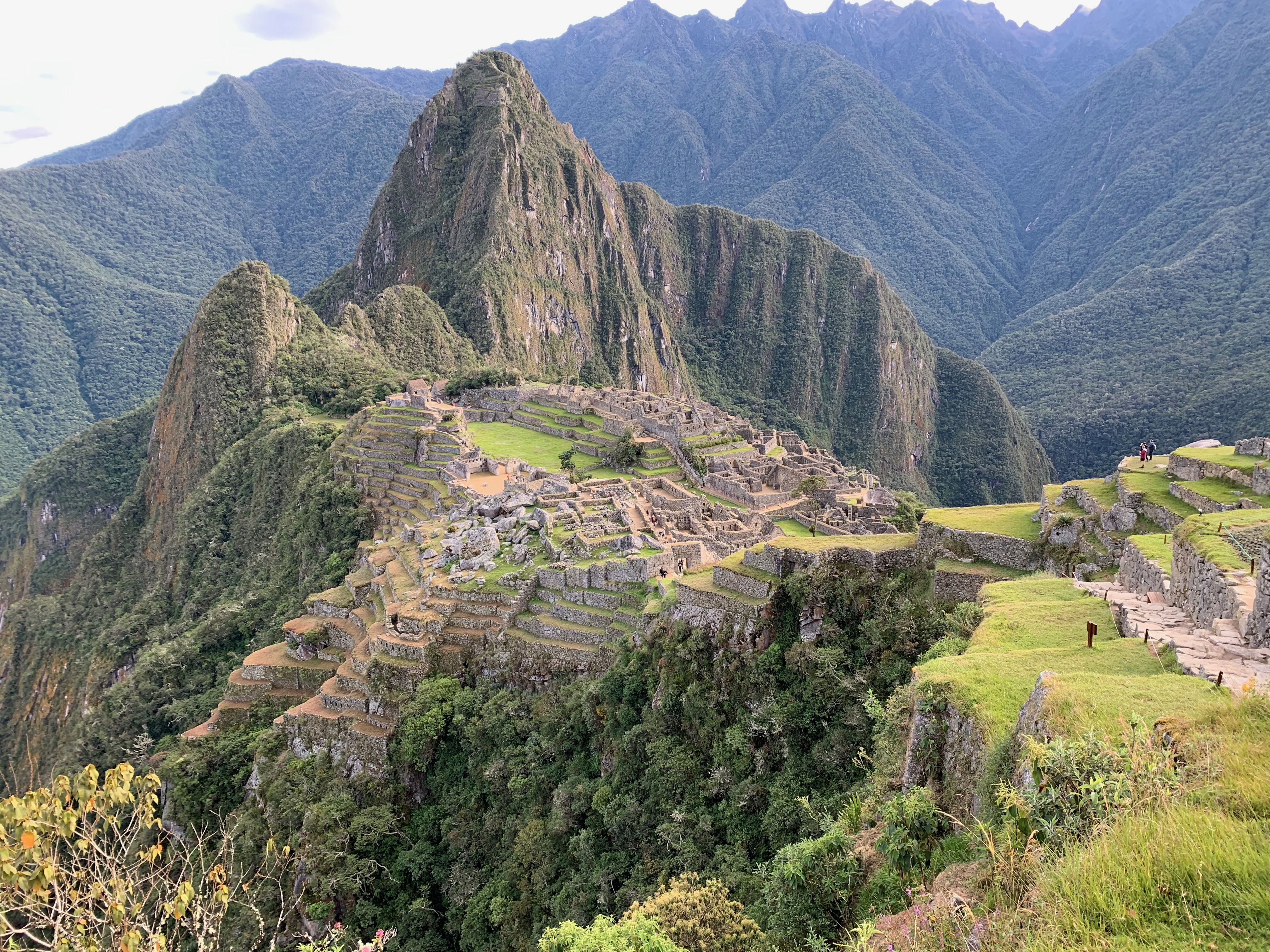
Arriving at Aguas Calientes the senses are completely overwhelmed at the town that has grown up around the base of this famous site and which, alongside the Great Wall of China, is one of the 7 wonders of the world. Restaurants line the streets, along with backpacking shops, hotels and every other outlet that serves those doing the great climb to Machu Picchu. We were booked into the Adonis and that evening Victor recommended dinner at a traditional Peruvian restaurant which served various meats on a hot lava rock. Our hotel rooms again were situated above a river roaring into the Urubamba just 40 or so feet below the window. Tomorrow we will take a bus for the last leg up to Machu Picchu and its an early 05h00hrs start. Victor has arranged for Jesus our tour guide to meet us at the hotel and take us around the site.

The process and procedures for getting to Machu Picchu are strict and getting onto the bus required both ticket and passport. Having completed the 50 or so switchbacks to reach the summit, we spilled out of the bus with our guide and entered the site. An advantage of being first to see Machu Picchu was that there were not many people at the site at this time, so the recommendation is to get there on the first buses early in the morning.
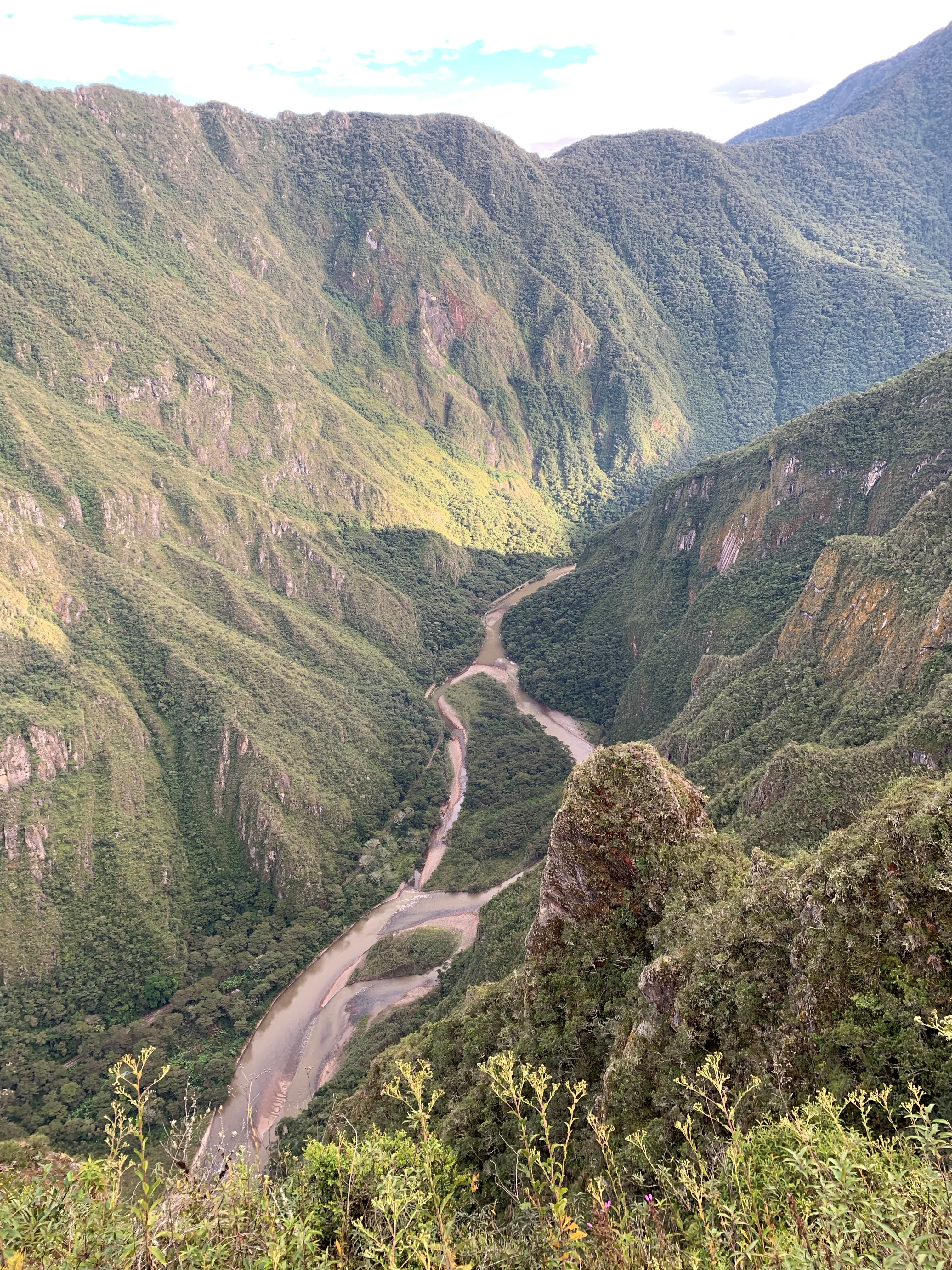
There are enough guide books to read about this incredible place but the best for me was the Inca Bridge. One of the lesser-known features of the Machu Picchu archaeological site, the Inca Bridge is a “secret” entrance to the citadel. Built into a spectacular path along a sheer mountain side, the simple plank bridge could quickly be removed to scupper the progress of any unwanted arrivals.

After around 3.5 hours we returned to the town on the bus and once again climbed aboard the special Machu Picchu train to take us back to Santa Teresa where the bikes were being stored. We again enjoyed a great night out hunting down one of the half dozen or so restaurants in Santa Teresa The following morning, we were up early for the long trek back to Cusco.
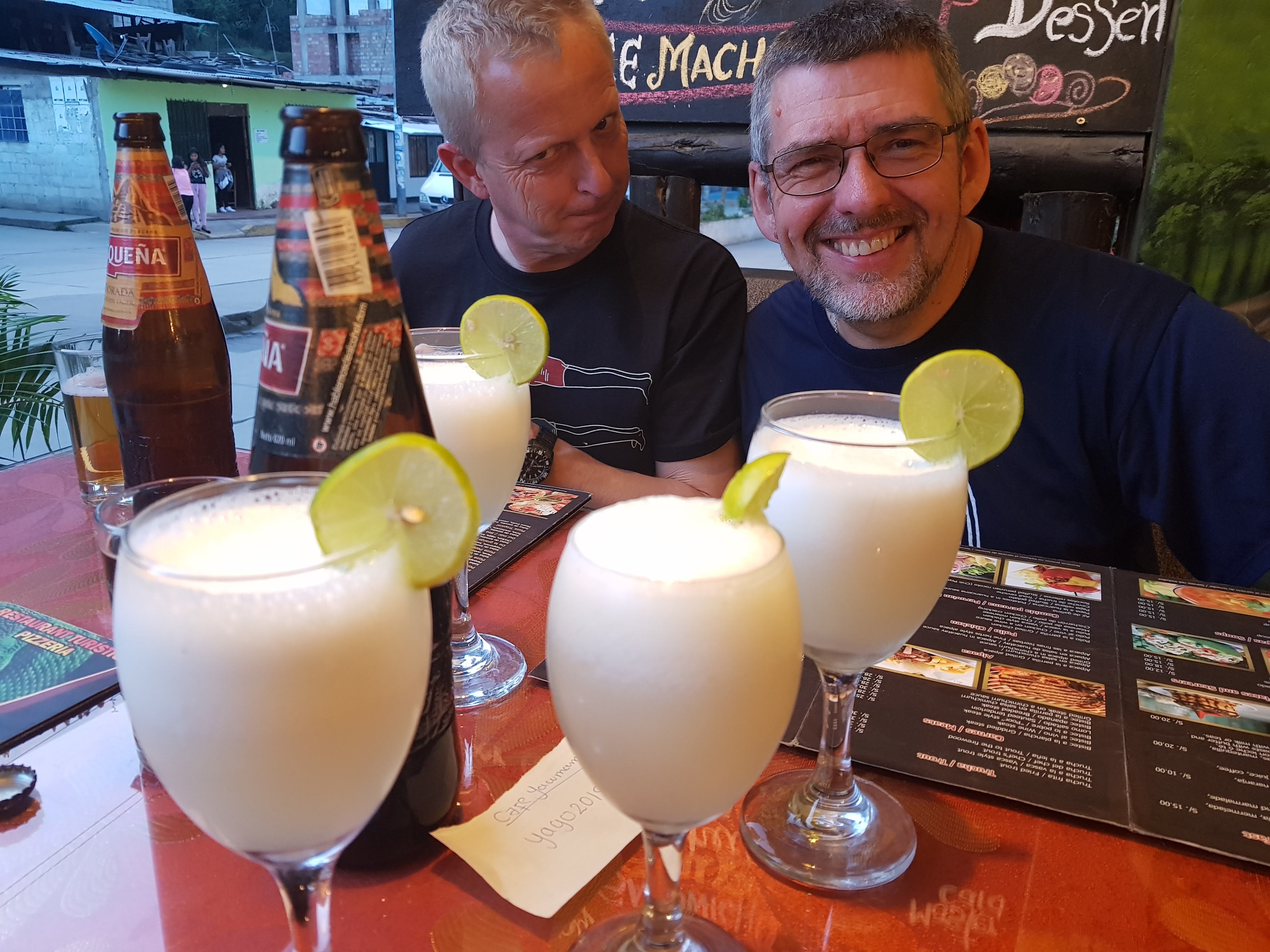
The road back to Cusco

Leaving Santa Teresa we immediately climbed to over 1,000m up to the Carrizales on our way to breaching the summit of the Andean Plateau. This ‘road’ was tough. Lots of loose rocky gravel combined with tight switchbacks that required stamina to keep going. Winding roads were narrow carved tight into the mountain side. The change in temperature from ground level was remarkable and where we were splashing ourselves riding through the streams down below to cool off, now we were tightening up our jackets and closing vents to keep warm. As we rode up into the mountains we looked down into the valley to see an Andean Eagle swooping silhouetted against the stark blue sky. The urge to gaze at the breath-taking landscape and splendour around was strong and had to be controlled with the knowledge that a loss of concentration could result in a much closer and unintended examination of the foliage several thousand metres below.

Eventually we climbed up to 4,310m at Abra Malaga and over the Andean Plateau and looking down saw a sight that filled us with joy – a spaghetti road flung casually against the mountain side was our way down – a road that will capture your heart and soul.
After 45 minutes of swooping bends and switchbacks we finally stopped for lunch at Peru Buen Gusto in Urubamba and ordered the Peruvian stir fried beef from chef Carlos.
After lunch visited the Salineras de Maras which features salt pans that are still used exactly as they were at the time of the Incas. As you make your way through the region, you’ll see people doing the backbreaking work of harvesting salt on small family plots. The reward? The salt gathered here is some of the best in the world. Water, naturally salt-infused, flows down from the mountains and settles in the pans. As the water evaporates, salt remains, to be extracted with simple tools. Source: Afar. And before we knew it we were fighting our way through the Cusco traffic in a downpour and finally back at Victor’s offices handing back the keys.

Back to Cusco
Our last farewell lunch was kindly sponsored by Victor and the team who took us to Picanteria La Cusqueñita. Reminiscent of the traditional quintas where families would go to spend an afternoon while feasting, it is a picantería, a traditional Cuzco Restaurant serving chicha (beer made from maize) and authentic local food in a rustic ambiance. Our meal started with a complimentary plate of mote y pusphu, an appetiser of boiled white corn and boiled toasted broad beans, a Cuzco classic. We then received huge portions of lamb and pork which were impossible to finish washed down with several pints of Cusqueña and in my case – the Negra variety.
Our lunch was punctuated by traditional dancing and singing on the stage. One particular song celebrated the defeat of malaria in Peru and consisted of a nurse placing a huge syringe up the bum of the dancers dressed as malaria virus’. She was quite enthusiastic and offered to do the same to the dining patrons. Richard attracted the attention of a cross-dressing something or other who took a lot of pleasure coming up from behind.
After the excitement of our journey and cultural expeditions, our remaining time in Cusco before returning to London was something of an anti-climax. Having lived the experience of every day with new challenges, landscapes and the beauty of our surroundings, Cusco was quite mundane in comparison and we found ourselves listlessly wandering around the town either drinking beer or looking for the perfect presents to take home. But we were bonded by what we had achieved, and Peru shall always remain a special journey that until now had remained in our imaginations. Thanks to Ian and his involuntary expulsion of air, the dream had become a reality. South America – we will be back!
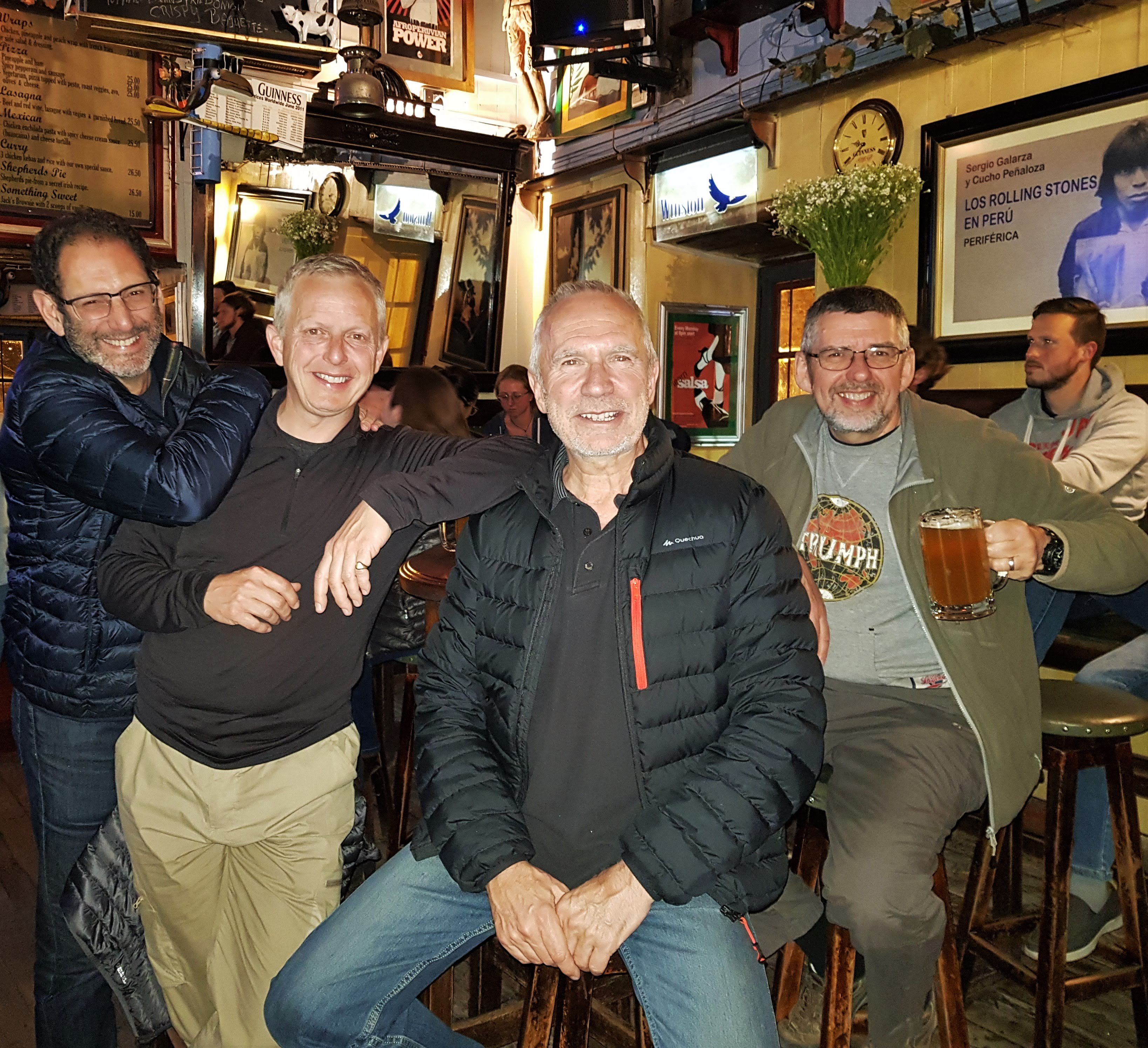



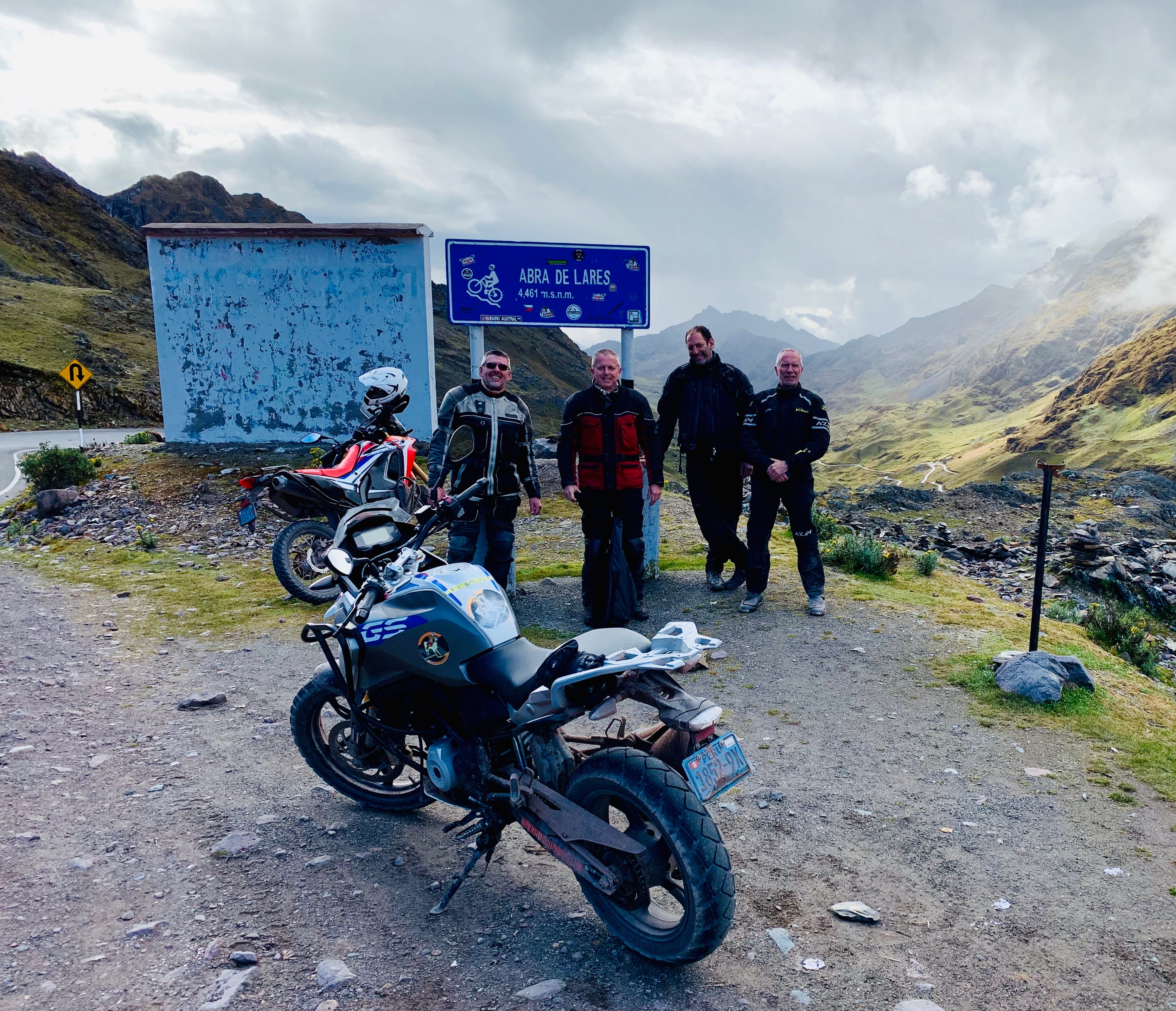


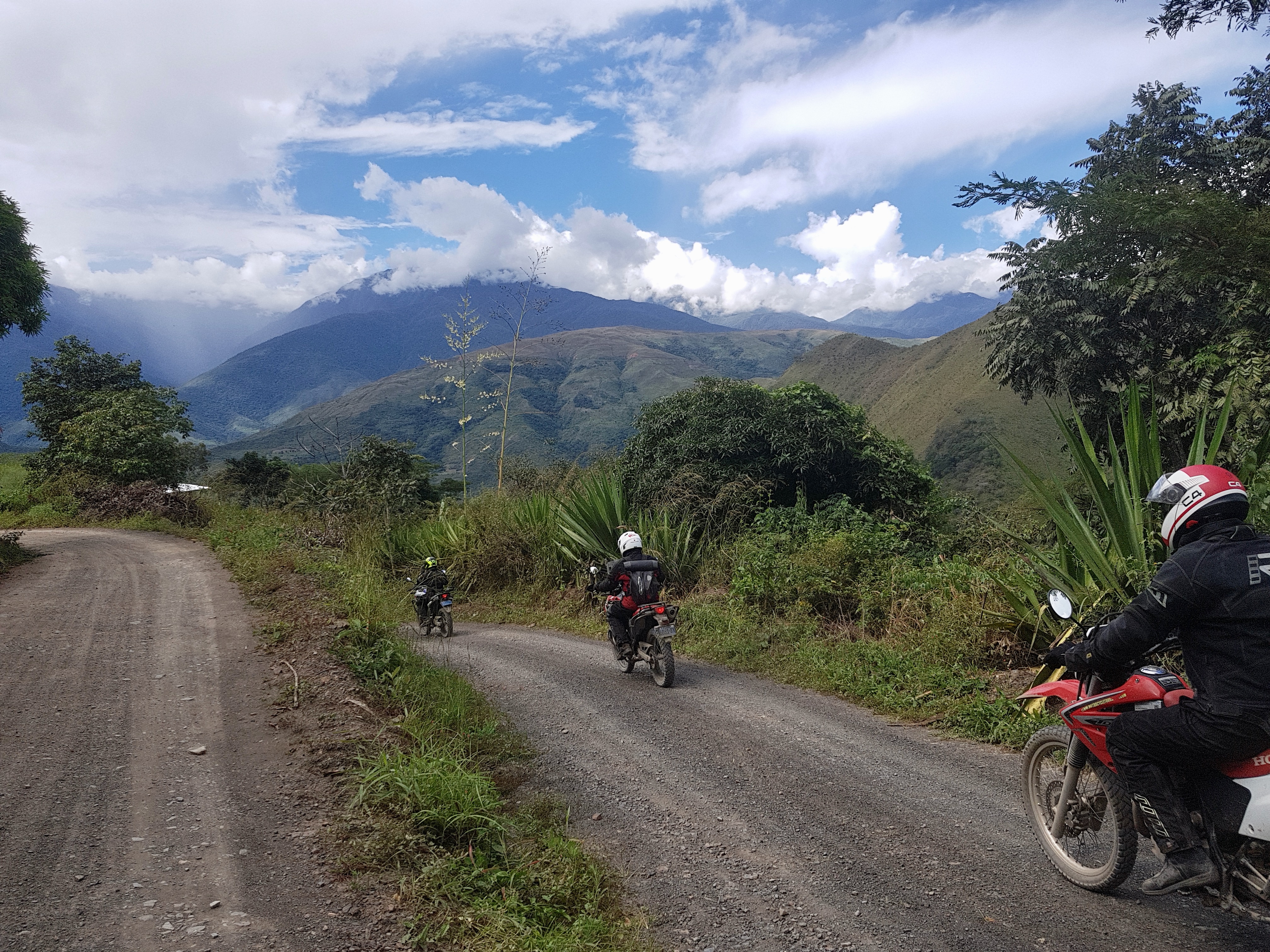
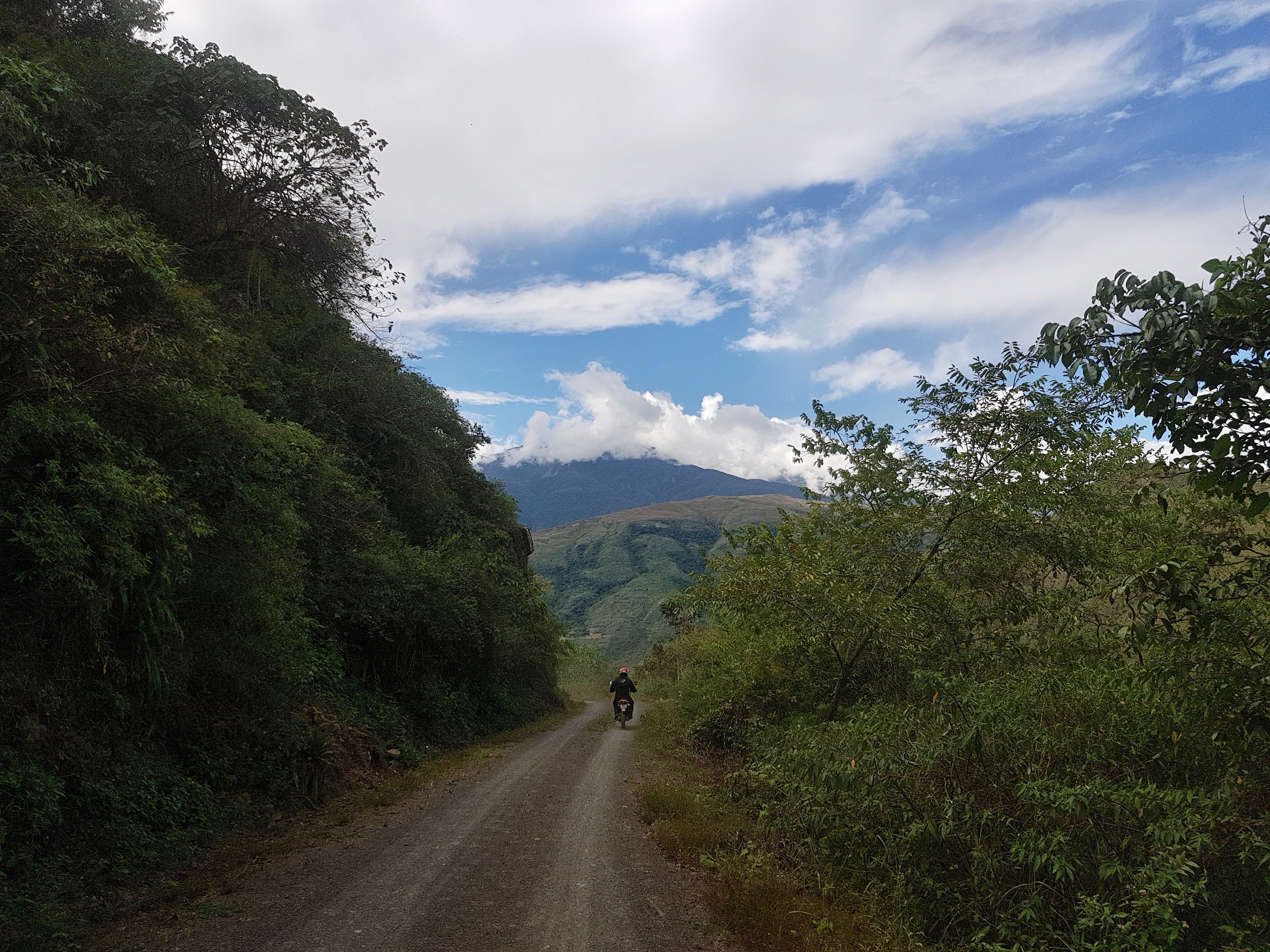




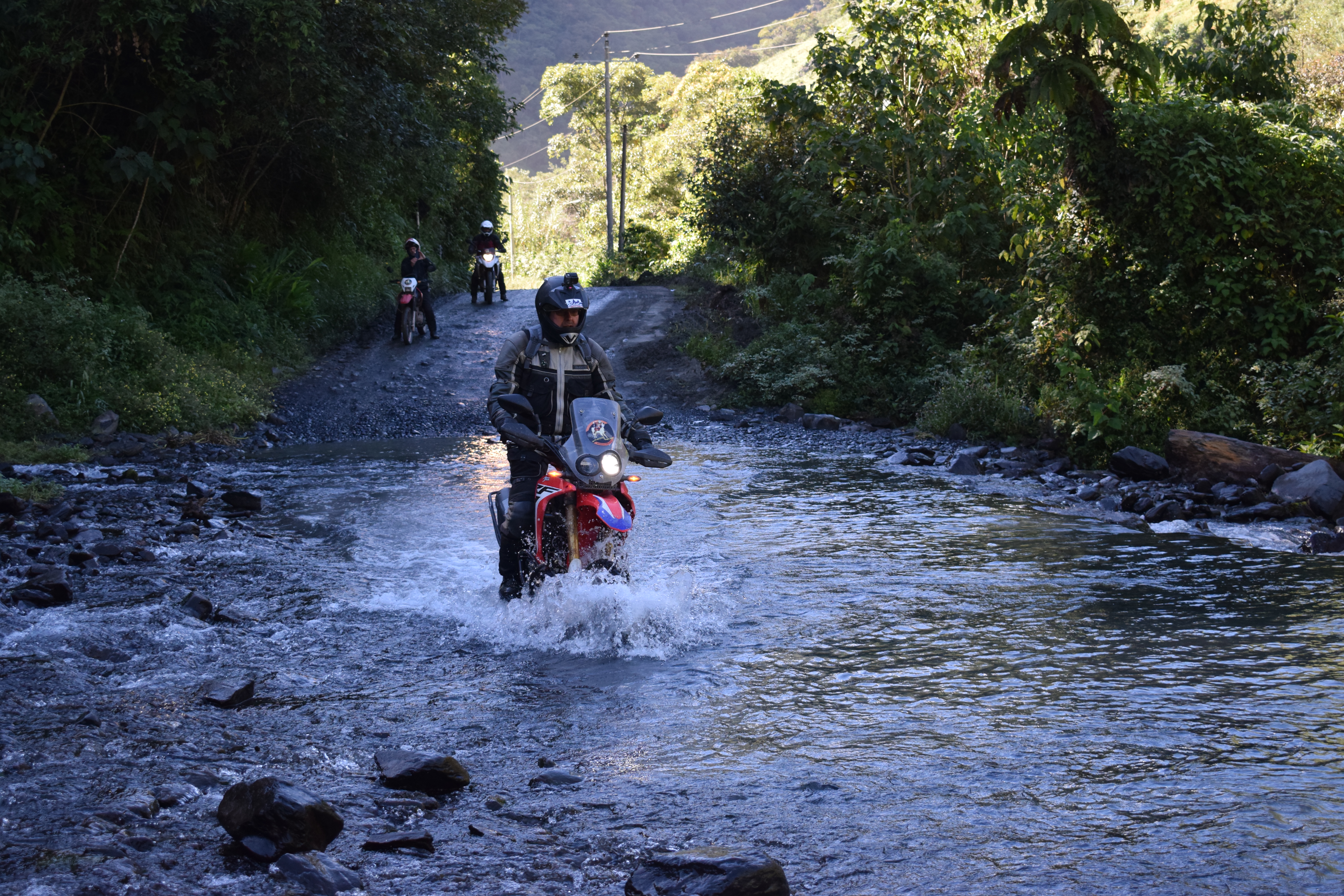












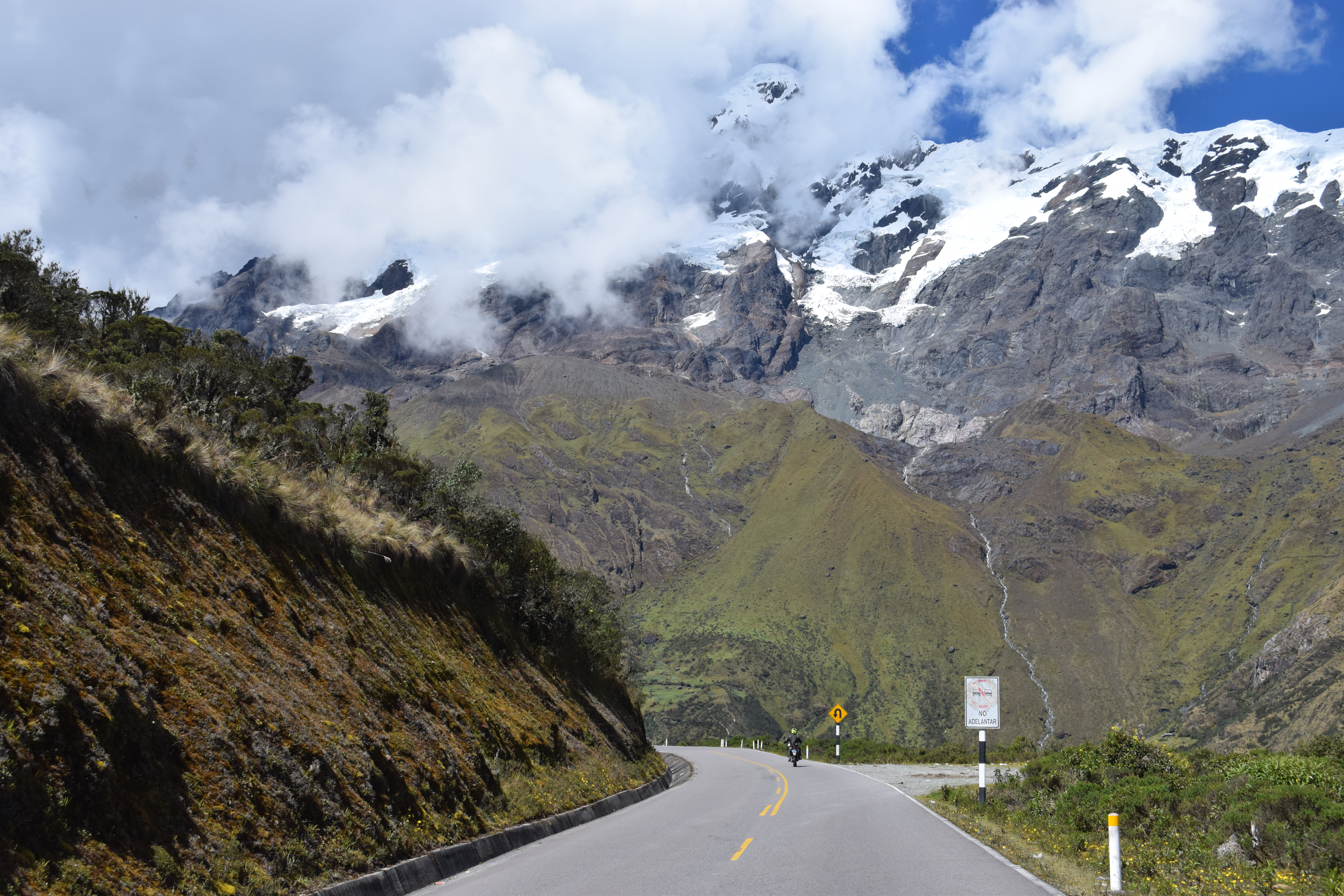


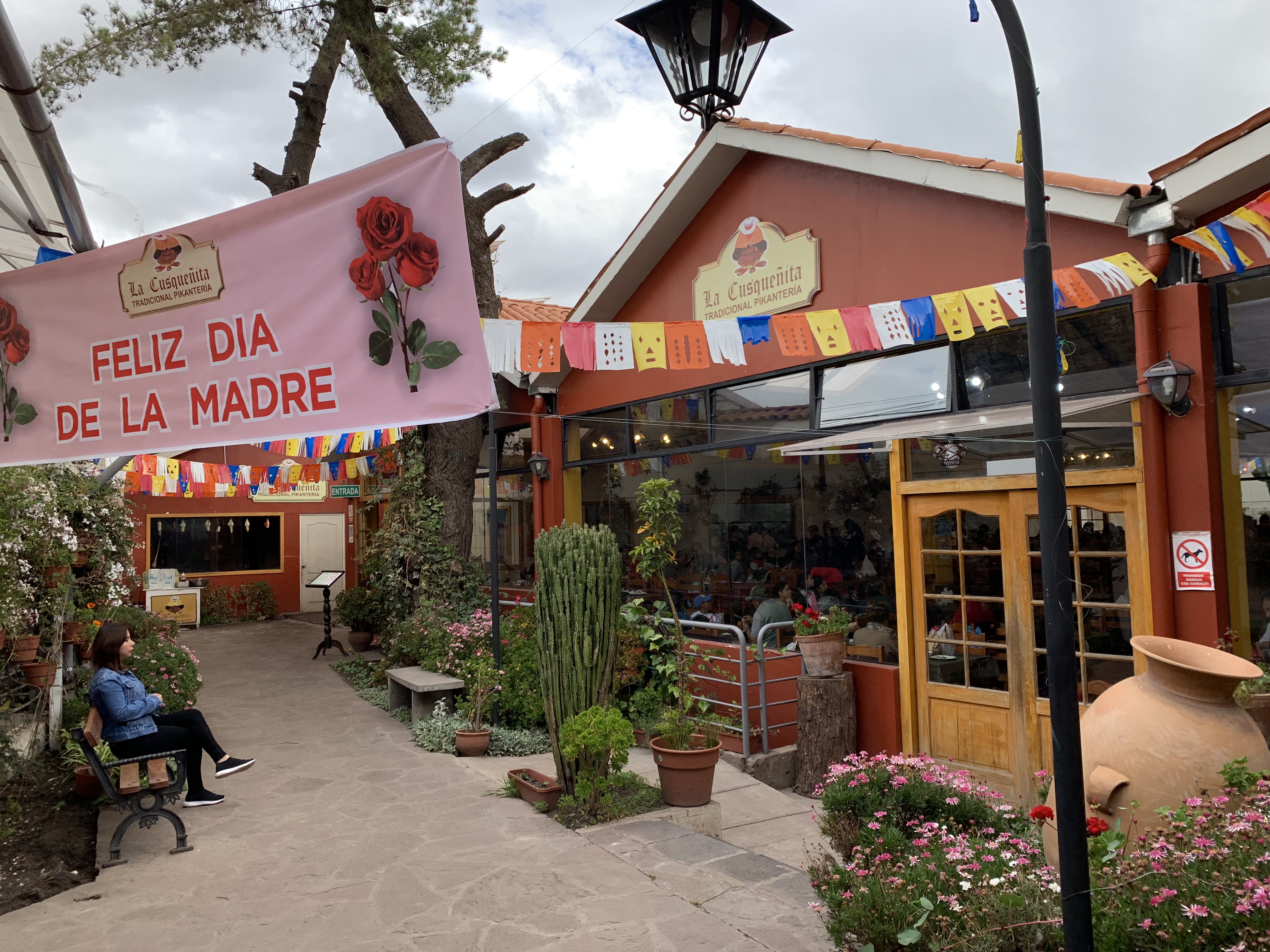

What a phenomenal adventure. Brilliant photos illustrating your progress too. Of course nothing like the sedate drive through the Italian alps to Lake Garda and the Dolomites in late August where I will have to bear the impossible terrain, bad food and intolerable heat. I’m loving the bike and thanks again for your excellent advice in picking the Adventure over the GS.
I am envious Robert Italy has it all and is my favourite biking destination. Not done the lakes yet and looking forward to following your progress
Fabulous, Mark. So enjoyed your journey from the comfort of my chair! You give a lovely view of your trip! Thanks.
Love, Cherry
Thanks Cherry looking forward to writing about the next one. So much planet – so little riding time!